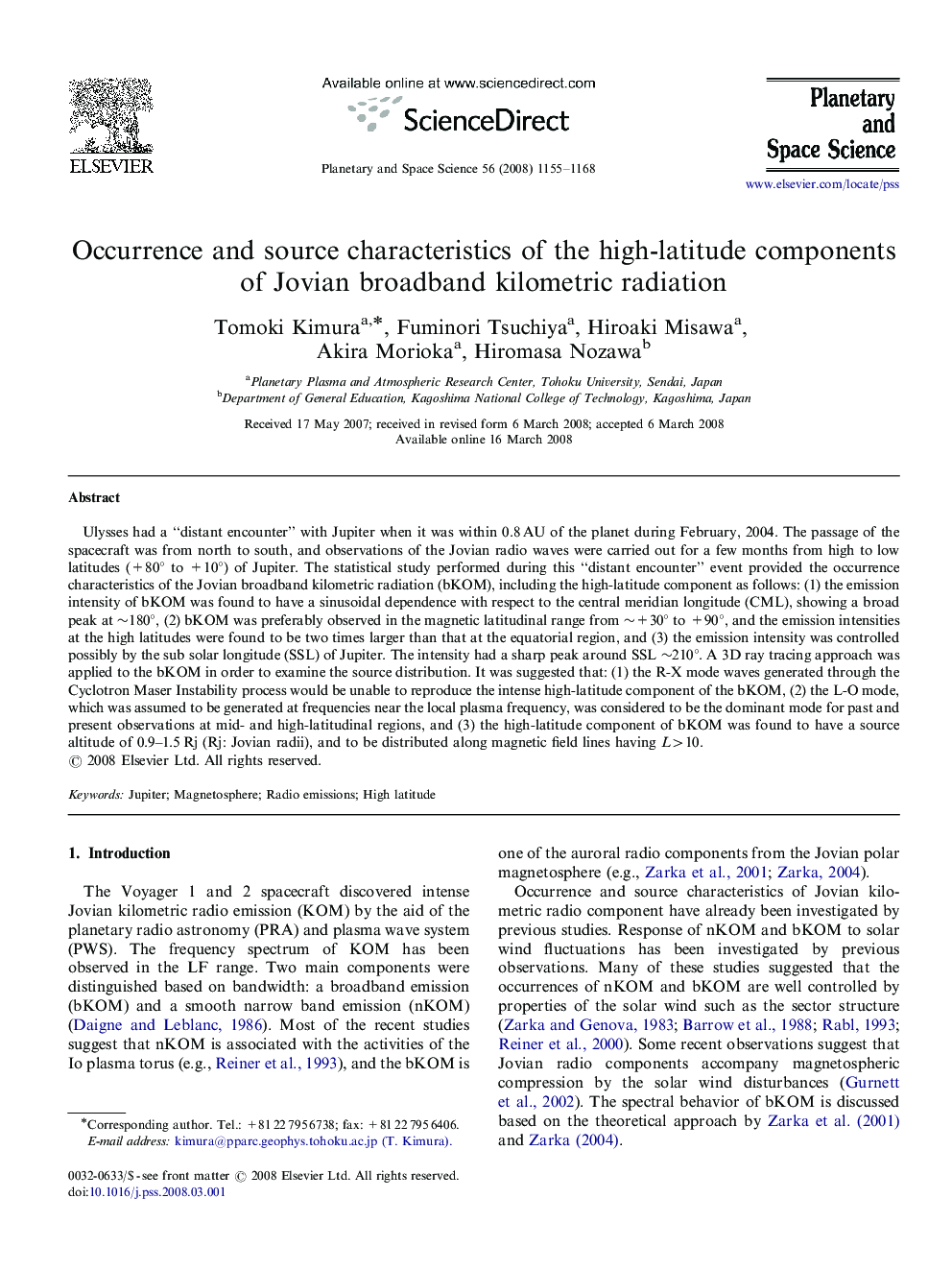| Article ID | Journal | Published Year | Pages | File Type |
|---|---|---|---|---|
| 1782366 | Planetary and Space Science | 2008 | 14 Pages |
Ulysses had a “distant encounter” with Jupiter when it was within 0.8 AU of the planet during February, 2004. The passage of the spacecraft was from north to south, and observations of the Jovian radio waves were carried out for a few months from high to low latitudes (+80° to +10°) of Jupiter. The statistical study performed during this “distant encounter” event provided the occurrence characteristics of the Jovian broadband kilometric radiation (bKOM), including the high-latitude component as follows: (1) the emission intensity of bKOM was found to have a sinusoidal dependence with respect to the central meridian longitude (CML), showing a broad peak at ∼180°, (2) bKOM was preferably observed in the magnetic latitudinal range from ∼+30° to +90°, and the emission intensities at the high latitudes were found to be two times larger than that at the equatorial region, and (3) the emission intensity was controlled possibly by the sub solar longitude (SSL) of Jupiter. The intensity had a sharp peak around SSL ∼210°. A 3D ray tracing approach was applied to the bKOM in order to examine the source distribution. It was suggested that: (1) the R-X mode waves generated through the Cyclotron Maser Instability process would be unable to reproduce the intense high-latitude component of the bKOM, (2) the L-O mode, which was assumed to be generated at frequencies near the local plasma frequency, was considered to be the dominant mode for past and present observations at mid- and high-latitudinal regions, and (3) the high-latitude component of bKOM was found to have a source altitude of 0.9–1.5 Rj (Rj: Jovian radii), and to be distributed along magnetic field lines having L>10.
